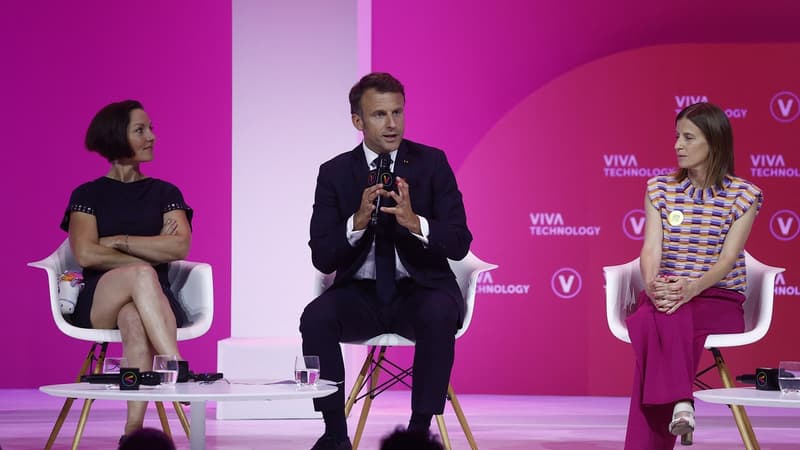“We have daily debates about immigration in our country (…), let’s use artificial intelligence!”. During an exchange with businessmen at the VivaTech fair in Paris, Emmanuel Macron suggested on Wednesday the use of artificial intelligence in the field of immigration, as he also proposes a draft regulation adopted by the European Parliament.
“We have a lot of people coming in, we have rules that are old and we treat them like at the beginning of the 20th century. Let’s use artificial intelligence and technologies to process data much faster! There will be much less fraud, we will.” Let’s hire much fewer people and we’ll go much faster,” said the head of state, who also announced 500 million euros of investment for the sector.
Improve the integration of refugees
But can artificial intelligence really help to better manage migration flows? Without a doubt, according to Claire Poirson, lawyer and founder of the Firsh firm: “The machine learns, we give it rules, we configure it. (…) These calculations allow machines to perform the same tasks as humans, more quickly”.
The lawyer recalls in this regard that AI is already used or tested in Canada, the United States or even Switzerland to improve the integration of refugees: “This allows the refugee to be welcomed in a structure that can receive him as soon as he arrives”. in the territory according to a certain number of data collected: accommodation, possibility of reception, work…”.
A device that could be very useful in France: “Normally, for the administration that manages residence permits and the reception of foreigners and that finds itself in an obvious lack of human resources, it would be essential!” adds Claire Poirson. Regarding the use of artificial intelligence to fight immigration fraud, the lawyer is once again in favor: “Artificial intelligence can check if any of the identity documents have been falsified. It can analyze photos and has been trained to detect blemishes that the human eye cannot detect. see.”
Beware of drifts
Whether it can be useful to facilitate certain tasks, artificial intelligence also raises many questions. In some countries, initiatives that use AI to manage migratory flows are questioned, as explained by Tania Racho, a doctor in European law and a member of the Désinfox-Migrations association: “This is the case of an artificial intelligence used in Germany vis-à-vis -vis asylum seekers, to verify their origin. It is possible to analyze your accent using a machine that will ask questions and say, for example, “This person is 30% Syrian and 70% of other origin. This tool is challenged because there is a lot of room for error and this raises real ethical difficulties.”
Because we should not underestimate the risk of a machine that lacks data and is badly developed to malfunction. This could generate serious violations of freedoms or even discrimination. To illustrate this risk, Claire Poirson evokes a case of sexism generated by artificial intelligence in a completely different register, that of recruitment:
“When Amazon wanted to launch an AI recruiting tool, it turned out to be discriminatory. The tool ruled out female resumes. There was a cognitive bias in the development of the AI that had been trained exclusively on male resumes (…) it is for these reasons that AI should be trained with people of different backgrounds, roles, or experience.”
Tania Racho also calls for extreme vigilance regarding artificial intelligence biases, even in the area of immigration: “Most AIs are designed both to fight crime and to fight irregular migration (…) However, we cannot ask an artificial intelligence to behave in the same way if it is looking for criminals or possible exiles. You have to differentiate these populations and today, it is not like that and it is dangerous.”
A necessary regulation
Aware of the risks posed by artificial intelligence, Europeans are drafting regulations to monitor its use. Some projects that had been considered and then developed will ultimately be rejected. This is the case of a lie detector that has been tested in some European airports:
“It would have been used through a webcam that asked questions and could detect 38 facial movements to determine if a person was lying,” explains Tania Racho. However, in her proposal, the European Parliament called for a ban on automatic facial recognition systems in public places. In fact, this type of technology “very much questions reliability when you think that the way of expressing yourself is not the same from one culture to another and neither is the way of lying”, emphasizes Tania Racho.
Therefore, to prevent abuse, regulation is essential. “AI raises many questions, socially, ethically and economically. (…) It’s about acting quickly and taking responsibility,” EU Commissioner Thierry Breton said recently. However, the European regulation should not enter into force before 2026.
Source: BFM TV


